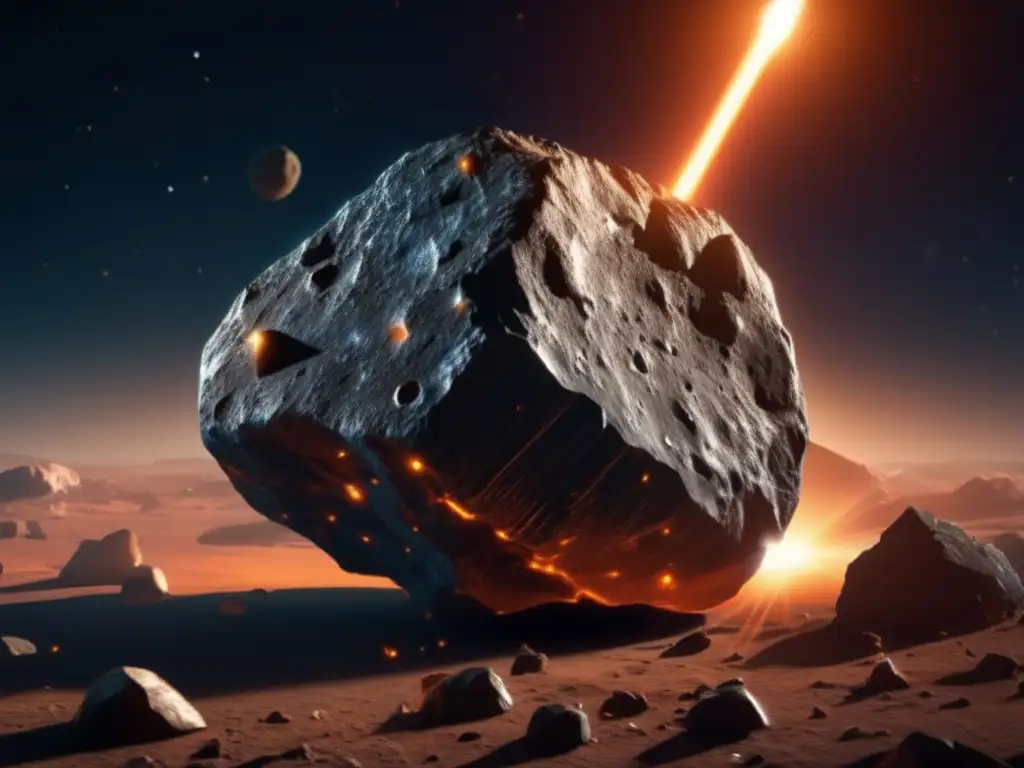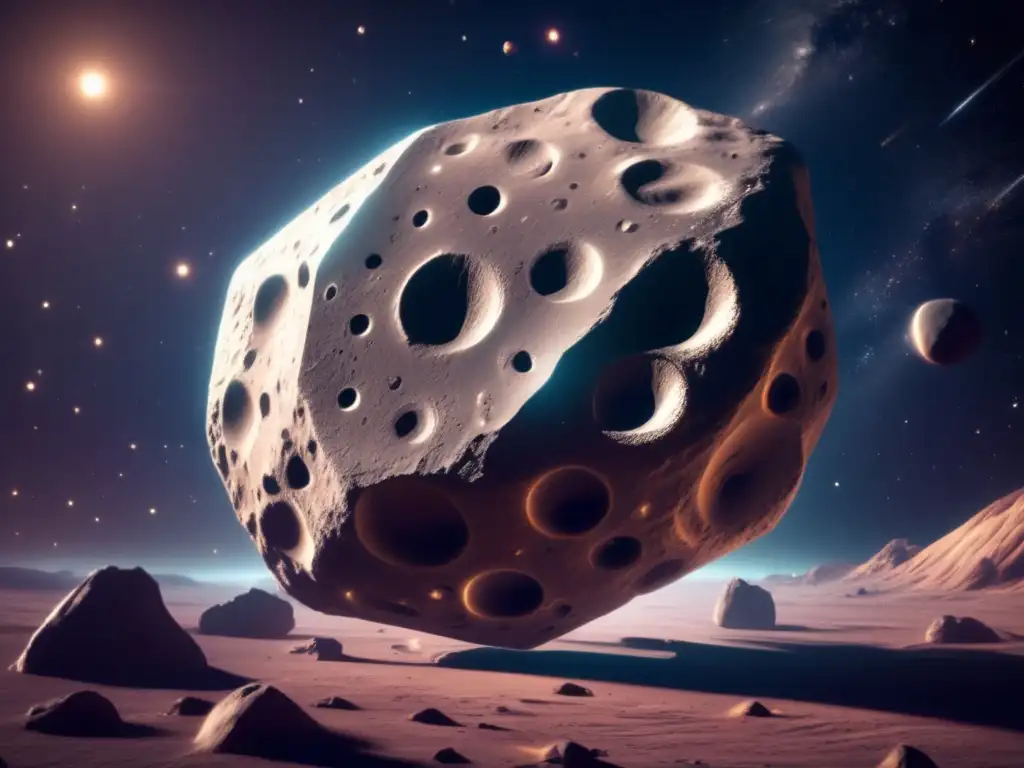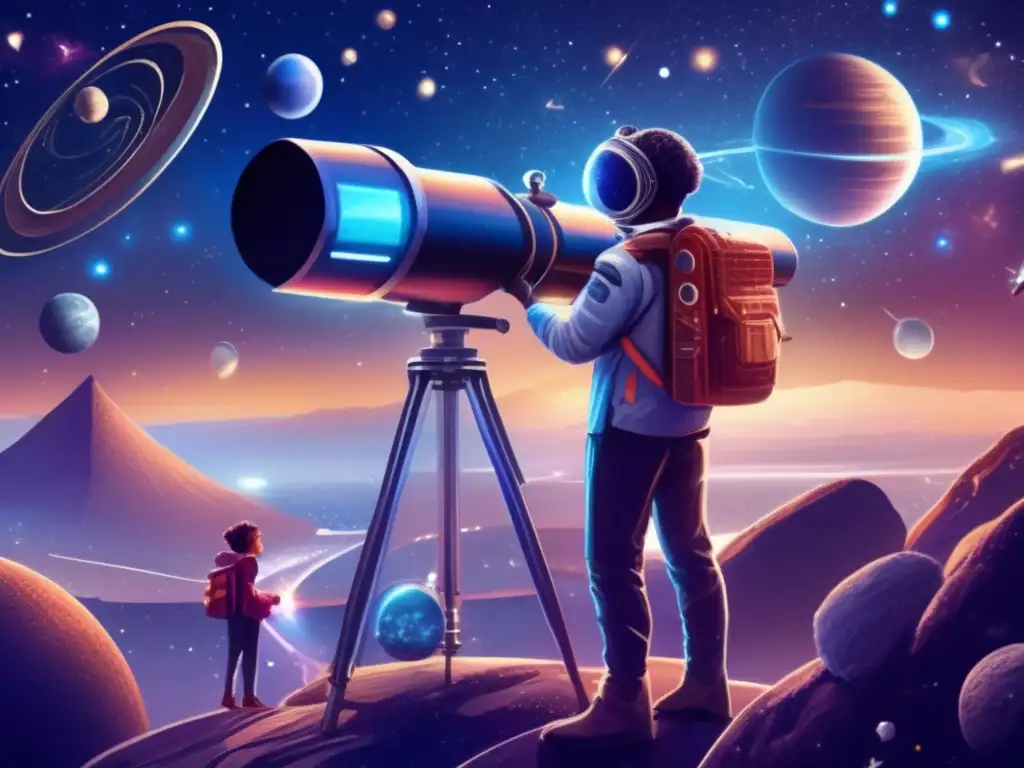Exploring The Solar System: A Guide To Observing Asteroids

Introduction
Asteroids are fascinating celestial objects that have captivated human interest for centuries. These rocky remnants from the early formation of our solar system can provide valuable insights into the origins and evolution of our cosmic neighborhood. In this guide, we will explore the exciting world of observing asteroids and delve into the techniques, tools, and knowledge required to embark on this astronomical adventure.
Understanding Asteroids

The Origins of Asteroids
Asteroids are believed to be remnants left over from the formation of our solar system around 4.6 billion years ago. They primarily reside in the asteroid belt, located between the orbits of Mars and Jupiter. These rocky bodies vary greatly in size, shape, and composition, ranging from small boulders to dwarf planet-sized objects.
Types of Asteroids
There are several different types of asteroids based on their composition and physical characteristics. The most common types include carbonaceous (C-type) asteroids, silicate (S-type) asteroids, and metallic (M-type) asteroids. Each type offers unique insights into the early solar system and can be observed using specialized techniques.
Impacts and Near-Earth Asteroids
Asteroid impacts have played a significant role in shaping the history of our planet. Studying near-Earth asteroids (NEAs), which are asteroids with orbits that come close to Earth's orbit, is crucial for understanding potential impact hazards and developing mitigation strategies. Observing NEAs requires precision and coordinated efforts.
Observing Techniques

Visual Observations
Visual observations of asteroids have a long history and continue to be a valuable technique for amateur and professional astronomers. By observing the changing positions of asteroids over time, observers can contribute to the understanding of their orbits, rotational periods, and even detect potential binary asteroid systems.
Photographic and CCD Imaging
Photographic and charge-coupled device (CCD) imaging techniques have revolutionized asteroid observations. These methods allow for the capture of high-resolution images that can be analyzed to determine an asteroid's shape, size, and surface features. They also enable the detection of faint asteroids that may otherwise go unnoticed.
Radar Observations
Radar observations utilize radio waves to bounce off asteroids and provide detailed information about their size, shape, and surface roughness. This technique is incredibly useful for studying near-Earth asteroids and characterizing their potential impact risks.
Asteroid Discoveries and Missions

Historical Asteroid Discoveries
Since the first asteroid, Ceres, was discovered in 1801, thousands of asteroids have been identified. The contributions of early astronomers, such as Giuseppe Piazzi and Heinrich Olbers, laid the foundation for our knowledge of these celestial objects. Their discoveries sparked a new field of study that continues to thrive today.
Significant Asteroid Missions
Space missions dedicated to exploring asteroids have provided invaluable data and images, further enriching our understanding of these objects. Missions like NASA's Dawn and Japan's Hayabusa have visited multiple asteroids, returning samples and captivating the world with stunning imagery of previously unexplored worlds.
Future Asteroid Exploration
Exciting future missions, such as NASA's Psyche mission and the European Space Agency's Hera mission, are set to explore unique asteroids that hold great scientific value. These missions aim to unlock the mysteries of asteroid composition, formation, and potential resources, paving the way for future human space exploration.
Frequently Asked Questions

-
What is the likelihood of an asteroid collision with Earth?
While the chances of a catastrophic impact are extremely low, efforts are being made to detect, track, and characterize potentially hazardous asteroids to mitigate any future risks.
-
How can I contribute to asteroid observations?
Amateur astronomers can participate in asteroid monitoring programs and contribute data to international databases. By capturing observational data, you can assist scientists in refining asteroid orbits and studying their properties.
-
Are there any famous asteroids we should know about?
Asteroids such as Ceres, Vesta, and Eros have gained significant attention due to their unique characteristics and scientific importance. These objects have been the focus of numerous space missions.
-
Can asteroids provide valuable resources?
Asteroids are rich in various resources, including precious metals and volatiles. The potential utilization of these resources in future space missions and colonization is an area of active research.
-
How do scientists determine an asteroid's composition?
Scientists use spectroscopy to analyze the light reflected by asteroids. By studying the absorption lines in the spectrum, they can identify the presence of specific elements and minerals on the asteroid's surface.
Conclusion
Observing asteroids is a thrilling endeavor that combines scientific inquiry with the wonder of exploring our cosmic neighborhood. By understanding the origins, types, and observing techniques associated with asteroids, we can contribute to the growing body of knowledge about these celestial objects. Whether through visual observations, advanced imaging techniques, or space missions, the study of asteroids continues to unveil the mysteries of our solar system. So grab your telescope, join the exploration, and uncover the secrets of asteroids!
We encourage you to share your thoughts and experiences in the comments section below. Don't forget to subscribe to Asteroid Realm for more captivating articles and updates. Together, let us embark on this astronomical journey and expand our understanding of the universe. Thank you for joining us!
Additional Resources

For those interested in delving deeper into the asteroid topic, here are some additional resources:
- NASA's Asteroid and Comet Watch
- NASA Jet Propulsion Laboratory: Asteroid Facts
- NASA's Solar System Exploration: In-Depth Asteroids
- International Astronomical Union: Asteroids
 The Role Of Telescope Filters In Asteroid Observation
The Role Of Telescope Filters In Asteroid Observation Star Charts And Asteroid Hunting: An Essential Guide
Star Charts And Asteroid Hunting: An Essential Guide Understanding Asteroid Orbits For Better Observation
Understanding Asteroid Orbits For Better ObservationIf you want to discover more articles similar to Exploring The Solar System: A Guide To Observing Asteroids, you can visit the Telescopes and Asteroid Observation category.
Leave a Reply

Articulos relacionados: